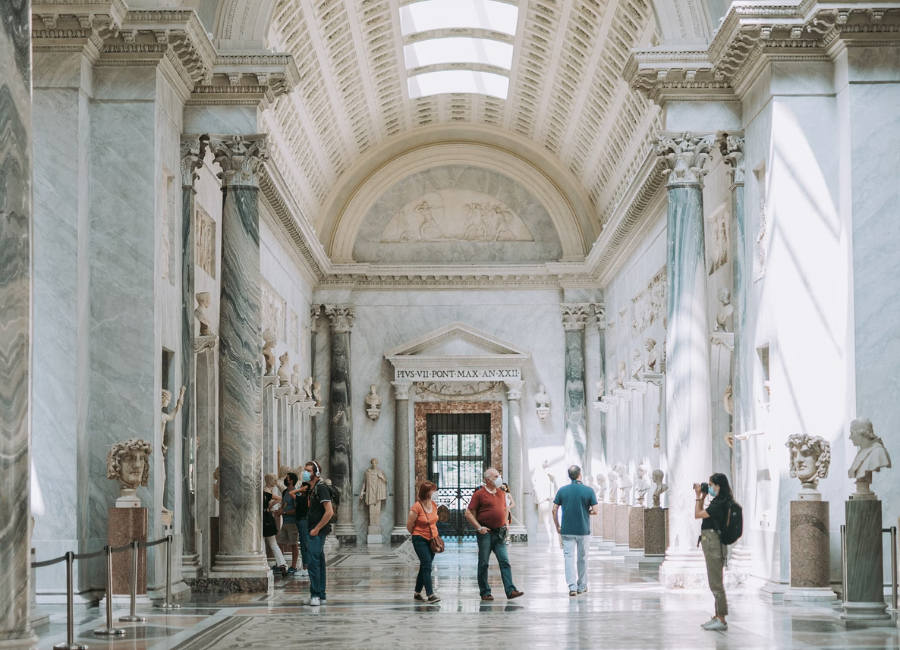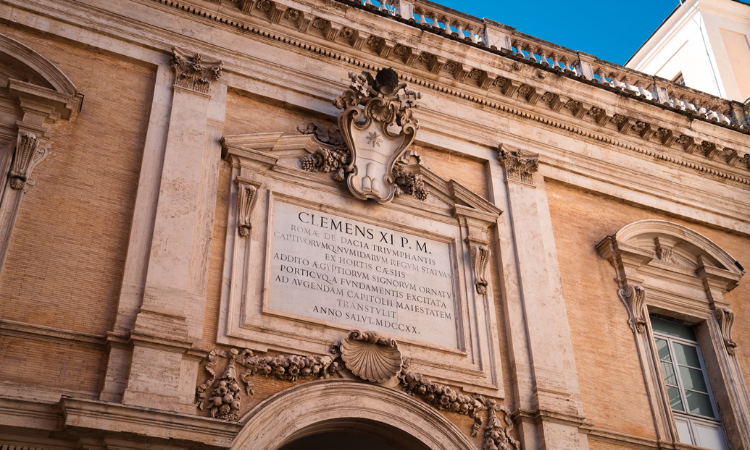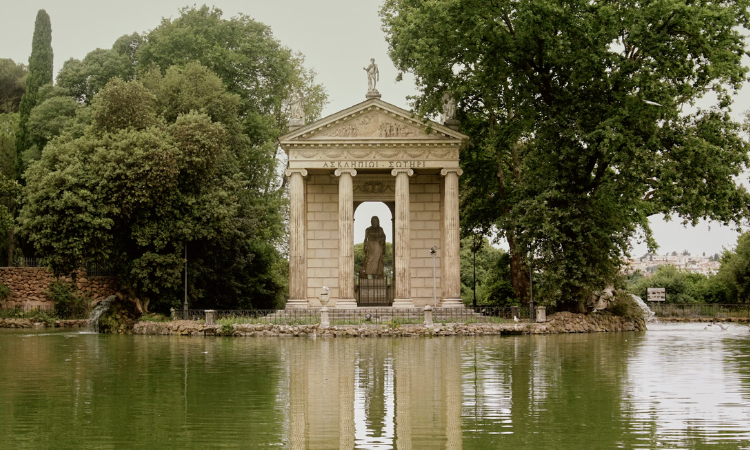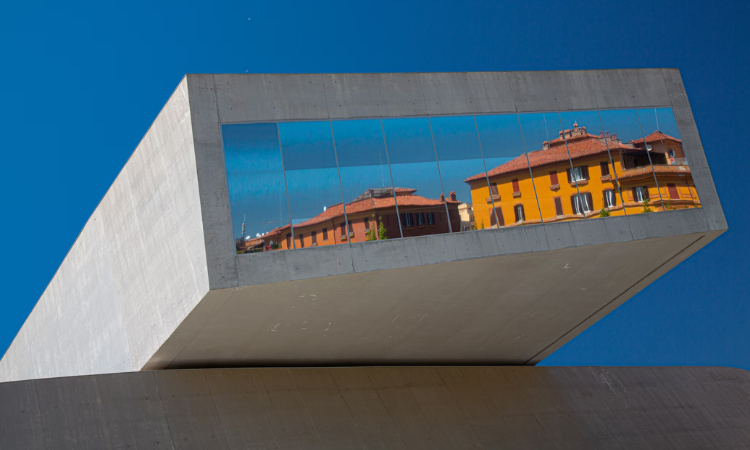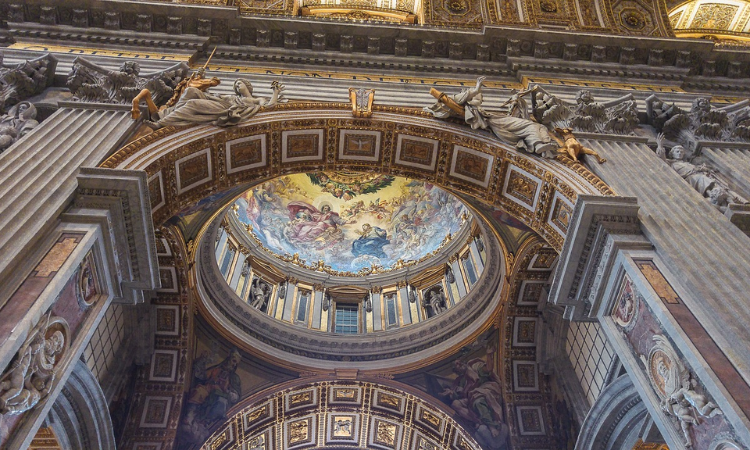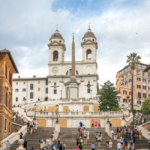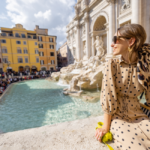Rome, the Eternal City and Italy’s capital is a treasure trove of museums, boasting world-renowned institutions like the Vatican Museums and Galleria Borghese. This prominence is hardly surprising, given the city’s rich history. During the Renaissance and Baroque eras, many Italian artists, including luminaries like Raphael, Michelangelo, and Caravaggio, were drawn to Rome, supported by cardinals and affluent locals. This led to their eventual status as globally recognized icons. Moreover, these art museums in Rome don’t just showcase modern masterpieces. The Vatican Museums, for instance, are filled with invaluable ancient art, collected by art-loving popes over the centuries. The Capitoline Museums also have their own unique offerings, hinting at a few surprises within their collections. Let us take you through the list of the best museums in Rome which you shouldn’t miss visiting.
The Vatican Museums – A Treasure Trove of Art and History
The Vatican Museums, one of the most famous museums in Rome Italy began in the early 16th century under Pope Julius II, who amassed a remarkable collection of 70,000 artworks, with 20,000 currently on public display. This vast collection, requiring weeks to fully explore, is housed in a complex of over 1,400 rooms, including the Sistine Chapel, the Raphael Rooms, and St. Peter’s Basilica. The wonderful collection of artworks, if placed in a line, would extend 14 kilometers. The museums are renowned not just for their size but for the quality of works by masters like Michelangelo and Raphael. A great place for history buffs, for sure!
Key Highlights:
1. The Raphael Rooms: Commissioned by Pope Julius II in 1508, these four rooms showcase Raphael’s genius. Raphael dedicated his life to this project until his death in 1520, leaving his assistants to finish it. Each room depicts different aspects of Raphael’s life and historical or religious themes.
2. Sistine Chapel: A major attraction, the Sistine Chapel is famous for Michelangelo’s ceiling frescoes, completed between 1508-1512. These frescoes include nine biblical scenes, with notable works like ‘The Creation of Adam’. The chapel’s artistry is a significant draw for visitors worldwide.
Purchasing skip the line Vatican museum tickets is beneficial as they enable you to bypass the often lengthy queues, which can extend to 2 hours or more. This means you can enter the museum promptly after a security check, saving significant time and ensuring you fully maximize your visit.
The Capitoline Museums – A Glimpse into the Ancient Sculptures of Rome
The Capitoline Museums, a renowned art gallery ensemble, are situated on Rome’s Capitoline Hill. This illustrious collection began in 1471 with Pope Sixtus IV’s donation of statues unearthed from ancient ruins. Subsequent popes expanded the collection, which further grew after 1870 through items discovered at archaeological sites within the city. Opened for public viewing in 1734, the museum is located in parts of the historic palaces bordering the Piazza del Campidoglio, an iconic square designed by Michelangelo in the 16th century, although his designs were fully implemented posthumously. Primarily housed in the Palazzo Nuovo and Palazzo dei Conservatori, which stand opposite each other on the square, the collection includes famed Roman artifacts such as the bronze statue of a she-wolf nursing Rome’s legendary founders Romulus and Remus, the Capitoline Venus, and the Dying Gaul sculpture.
The Borghese Gallery – A Showcase of Renaissance and Baroque Art
The Borghese Gallery in Rome is a celebrated center of Renaissance and Baroque art, notably featuring an exceptional collection of Gian Lorenzo Bernini’s sculptures. Bernini’s works, known for their dramatic expression and intricate detail, include masterpieces like “Apollo and Daphne,” “The Rape of Proserpina,” and a dynamic portrayal of “David.” Besides Bernini, the gallery also houses significant Renaissance artworks, including Caravaggio’s masterpieces like “Young Sick Bacchus” and “Boy with a Basket of Fruit,” showcasing his signature chiaroscuro technique. This combination of Bernini’s Baroque sculptures and Renaissance paintings makes the Borghese Gallery a vital destination for art enthusiasts.
Other Highlights: The collection extends beyond these luminaries, featuring works by Raphael, Titian, and Correggio, among others, thus offering a comprehensive glimpse into the artistic transitions from the Renaissance to the Baroque period.
Advance Booking:
- Necessity: Visiting the Borghese Gallery requires advance planning, as entry is strictly regulated. The gallery limits the number of visitors and allows entry in 2-hour time slots to ensure a comfortable and uncrowded experience.
- How to Book: Tickets can be booked online through the gallery’s official website or via reputable tour companies. It is advisable to book several weeks in advance, especially during peak tourist seasons.
Modern and Contemporary Art in Rome
Rome, a city steeped in history, is not just about ancient ruins and Renaissance art; it also offers a vibrant scene for both modern art and contemporary art. Two key institutions, MAXXI and Palazzo delle Esposizioni, stand out in this regard.
MAXXI – National Museum of 21st Century Arts is a pioneering museum dedicated to contemporary creativity. Designed by the renowned architect Zaha Hadid, MAXXI is a masterpiece of modern architecture. Its fluid and dynamic spaces revolutionize the concept of a museum, making it a work of art in itself. MAXXI hosts a variety of art forms, including visual arts, architecture, and photography, and emphasizes innovative, experimental art. The museum’s design, characterized by sinuous curves and expansive spaces, creates a unique environment that complements and enhances the pieces of modern art on display.
Palazzo delle Esposizioni, another prominent venue, serves as a cultural hub in the heart of Rome. It is one of the city’s largest exhibition spaces and hosts a wide array of events, including contemporary art exhibitions, film screenings, and cultural initiatives. The Palazzo plays a crucial role in bringing global contemporary art and cultural discourse to the Roman audience, showcasing works from international and Italian artists alike.
Unique Museums Worth Visiting
Beyond the renowned landmarks, Rome is home to some exceptional yet lesser-known museums in Rome, each offering a glimpse into varied aspects of its rich heritage. The National Etruscan Museum, housed in the majestic Villa Giulia, is a treasure trove of Etruscan artifacts, offering insight into the pre-Roman culture that once flourished in Italy. Villa Farnesina, a sublime example of Renaissance architecture, is famed for its stunning frescoes by artists like Raphael, showcasing the opulence and artistic vibrancy of the period. Palazzo Doria Pamphilj, a privately owned gem, houses an extensive art collection, including works by masters like Caravaggio and Velázquez, set within a beautifully preserved Roman palace. Each museum not only displays unique collections but also embodies the historical and cultural layers that make Rome a fascinating city.
Free Museums in Rome and Unexplored Corners
For those who visit Rome on budget or seeking the road less traveled, some of the best free museums in Rome and hidden spots offer a unique cultural experience. Museo Carlo Bilotti and Museo della Repubblica Romana, among others, provide intriguing insights without the crowds.
Tips for Navigating Rome’s Museum Landscape
A well-planned museum itinerary in Rome can make all the difference. Opt for quieter visiting times, consider skip-the-line or combined tickets, and don’t underestimate the value of a guided tour to deepen your understanding of Rome’s artistic and historical fabric.
Beyond Museums – Rome’s Cultural Fabric
Step beyond Rome museums to embrace the city’s living history. The Roman Forum, Piazza Navona, and Campo de’ Fiori are just the beginning. Strolling through Rome’s streets and neighborhoods is like flipping through a vivid history book.
Conclusion
Museums in Rome are not just buildings; they are gateways to a world where history, art, and culture intertwine. For a comprehensive Italian cultural journey, consider exploring beyond Rome with our Italy Tours and Italy by Rail. Ancient Rome awaits, ready to unfold its stories to those eager to listen.
FAQs
What are the Must-See Museums in Rome?
Answer: Rome boasts several must-see museums, each offering a unique glimpse into different aspects of art and history. The Vatican Museums, with their vast collections and the iconic Sistine Chapel, are a top choice. The Capitoline Museums provide insights into ancient Roman history, while the Borghese Gallery is renowned for its Renaissance and Baroque art collections. For modern art enthusiasts, MAXXI and Palazzo delle Esposizioni are great choices.
Can You Visit Museums in Rome for Free?
Answer: Yes, several museums in Rome offer free admission. Some museums have specific days or hours when entry is free, while others are always free. It’s advisable to check the individual museum’s website for the most up-to-date information on free entry times.
How Can I Avoid Long Lines at Rome’s Museums?
Answer: To avoid long lines, especially at popular museums like the Vatican Museums, it’s best to book tickets in advance. Many museums offer ‘skip-the-line’ tickets that can be purchased online. Visiting during off-peak hours, such as early mornings or weekdays, can also help avoid crowds.
Are There Guided Tours Available in Rome’s Museums?
Answer: Many museums in Rome offer guided tours, which can enhance your visiting experience with expert insights and historical context. These tours are often available in multiple languages and can be booked directly through the museum or through third-party tour operators.
What are Some Unique Museums to Visit in Rome?
Answer: Beyond the well-known museums, Rome has several unique museums worth visiting. The National Etruscan Museum showcases the fascinating history and art of the Etruscans. Villa Farnesina offers a glimpse into Renaissance art and architecture, and Palazzo Doria Pamphilj houses an impressive private art collection.
 Toll Free (USA & Canada) +1 866 978 2997
Toll Free (USA & Canada) +1 866 978 2997


